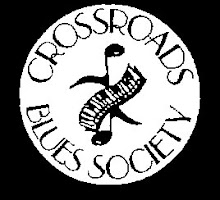Midnight at the Barrelhouse: The Johnny Otis Story
Author – George Lipsitz
University of Minnesota Press
http://www.upress.umn.edu/
244 pages including notes
Johnny Otis is a familiar name to blues fans. As a musician, Otis had a huge hit in 1958 with the classic “Willie and the Hand Jive” featuring the famed drummer Earl Palmer and a guitar riff from Jimmy Nolen that, to this day, never fails to fill the dance floor. Otis had an extensive recording career with bands that featured many notable musicians, too numerous to list. And while he never had another hit on the scale of “Hand Jive”, he cut plenty of tracks that embodied the best traits of burgeoning rhythm & blues genre.
But as this book points out, Otis really is a modern-day Renaissance man with a mind-boggling list of interests from all aspects of the human existence. At various points in his life, Otis was a talent scout, a minister with his own church, hosted a long running radio program, a politician, a farmer, award-winning artist, author & writer, club owner and a record producer in addition to his duties as a loving father.
The truly unique part of the Otis story is that he was born to Greek immigrant parents, grew up in a mixed neighborhood and became such an admirer of black culture that he lived his life as a black man, able to pass as a light-skinned African-American due to his olive skin tone. Otis fought against racial injustice all of his life, even from his mother who rejected Johnny’s beautiful Afro-Filipina wife, Phyllis, without explanation for nearly twenty years. In the introduction, the author does a marvelous job integrating the various threads of Otis life in his reactions to the1965 Watts riots, which Otis viewed first hand. Several people recognized the musician when he arrived at the center of the riot and helped get him out of harm’s way.
Given that Lipsitz is a professor of black studies and sociology at the University of California, it is not a surprise that racism and the black experience in the last century figure prominently in the narrative. At times it seems Lipsitz is repeatedly returning to certain material and ideas, which pulls your focus away from the Otis story. And yet the two storylines are irrevocably intertwined. If you want to understand Johnny Otis, you need to know black history and have a basic under-standing of the black experience.
Otis discovered, mentored or promoted many outstanding musicians and singers, including Big Mama Thornton, Little Ester Phillips, Barbara Morrison, Etta James and Frank Zappa, who grew his moustache in tribute to Otis. One humorous tale in the book describes Otis developing L’il Julian Herrera as a singer and then producing his first record, “Lonely Lonely Nights”, which was a huge hit in the Chicano market. Later Otis discovers that Julian is really Ron Gregory who is, as Lipsitz writes, “…a Hungarian American Jew who thought of himself as Chicano singing black music in a band run by an ethnic Greek who thought of himself as black!” In 1970, Otis staged his legendary concert at the Monterey Jazz Festival featuring a roster of R&B legends including Little Esther, Eddie “Cleanhead” Vinson, Pee Wee Crayton, Roy Milton and Joe Turner. The resulting two-album release of highlights from the show revived the careers of most of the participants.
One gauge of a man’s legacy is the recognition of his peers. Johnny Otis has been honored with spots in the Rock ‘n’ Roll Hall of Fame, the Rhythm and Blues Hall of Fame plus the Blues Hall of Fame. This biography provides you with a deeper look at a man who helped shaped the music we listen to today, a man who never stopped exploring the world around him and never stopped fighting for justice and equality. His life should be an inspiration to all of us.
Subscribe to:
Post Comments (Atom)







No comments:
Post a Comment